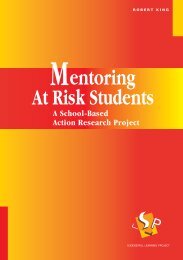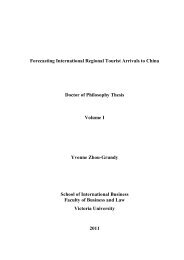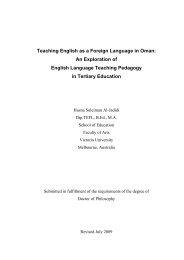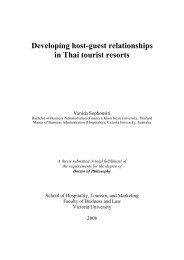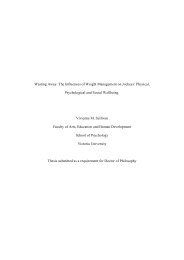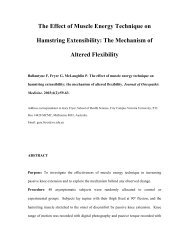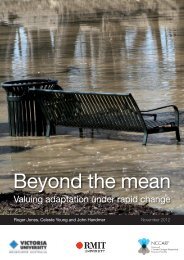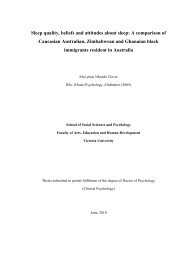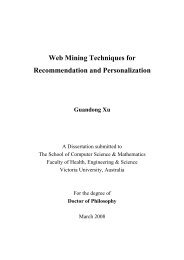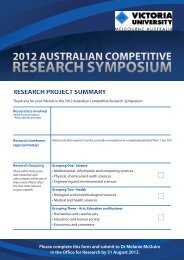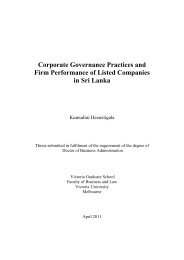Providing Education and Training for At Risk ... - Victoria University
Providing Education and Training for At Risk ... - Victoria University
Providing Education and Training for At Risk ... - Victoria University
- No tags were found...
You also want an ePaper? Increase the reach of your titles
YUMPU automatically turns print PDFs into web optimized ePapers that Google loves.
6Conclusion <strong>and</strong> RecommendationsMr Gradgrind walked homeward from the school, in a state of considerablesatisfaction. It was his school, <strong>and</strong> he intended it to be a model. He intendedevery child in it to be a model - just as the young Gradgrinds were all models.There were five young Gradgrinds, <strong>and</strong> they were models every one. They had been lecturedat, from their tenderest years….Charles Dickens, commencing Chapter Three of Hard Times, sets up a model of successfullearning which comes out of Gradgrind’s view of successful living: your children should beclones not just of you, the parent, but of each other. Of course, Dickens’ satirical target is justthis soul-destroying modelling of both living <strong>and</strong> learning, since the rest of Hard Times showsthe disintegration of Gradgrind’s view of the world.We live <strong>and</strong> learn in our own hard times. Young adults thought to be ‘at risk’ of poor learningachievements, or who have previously left schooling <strong>and</strong> since shown their vulnerability, bothsocially <strong>and</strong> vocationally, are a challenge <strong>for</strong> any provision of appropriate learning. This issimply because successful learning seems to be inevitably underpinned by successful living,<strong>and</strong> it is a tall order to take on the consequences of a young person’s health, home <strong>and</strong> economicsituation, where these have clearly had, or are currently having, a negative impact upon her orhis learning outcomes.So our research in this Successful Learning Project, even although it has identified programmodels, has eschewed ‘modelling’ of worthwhile provision, on the grounds that this is toomuch like Gradgrind’s ‘cloning’. People are thankfully too different to model the success ofeither living or learning, much less how the <strong>for</strong>mer feeds into the latter.Nevertheless, we are confident that in certain broad areas of provision, namely, throughschooling, in TAFE, <strong>and</strong> in community settings, sufficient evidence of worthwhile programscan be identified so that generalisations can be made.The Literature Review concluded with these four principles of good programs. In listing themagain, we can draw, from the empirical work which has since ensued, a series ofRecommendations which match these. Sub-recommendations show how these can beoperationalised in worthwhile SL (Successful Learning) programs.1. The relevance of (students’) cultural or community context is centralHere, we specified that programs, activities <strong>and</strong> outcomes should be context sensitive, in afairly broad way. One size does not fit all: a diversity of provision will be required, but all will60




